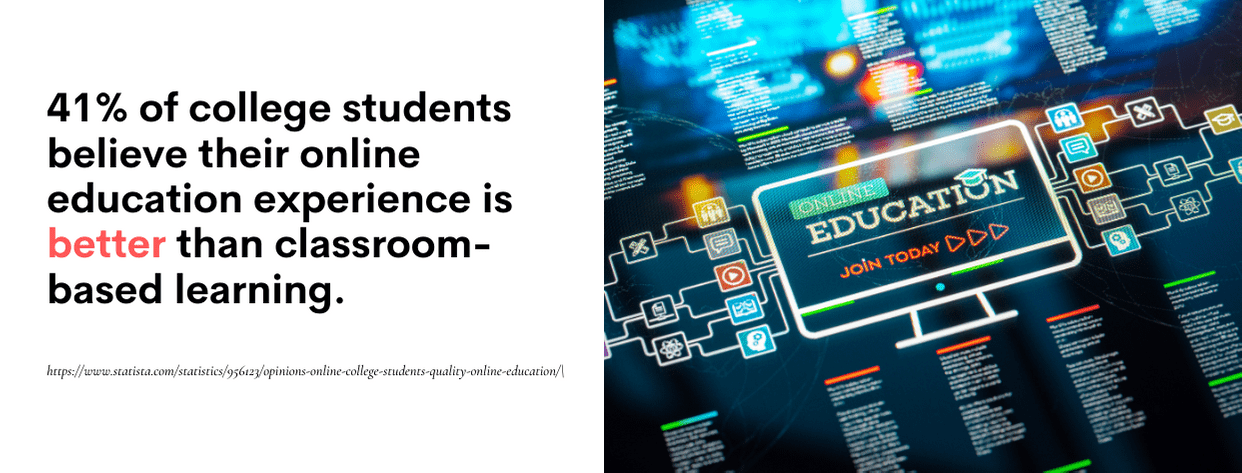So much has changed in the digital age, particularly in the manner that education is delivered! Learning goes hand in hand with the evolution in technology, providing students with a wealth of options for their educational pursuits. The advancement in internet connection speed and social media penetration in everyday life have revolutionized learning as we know it.
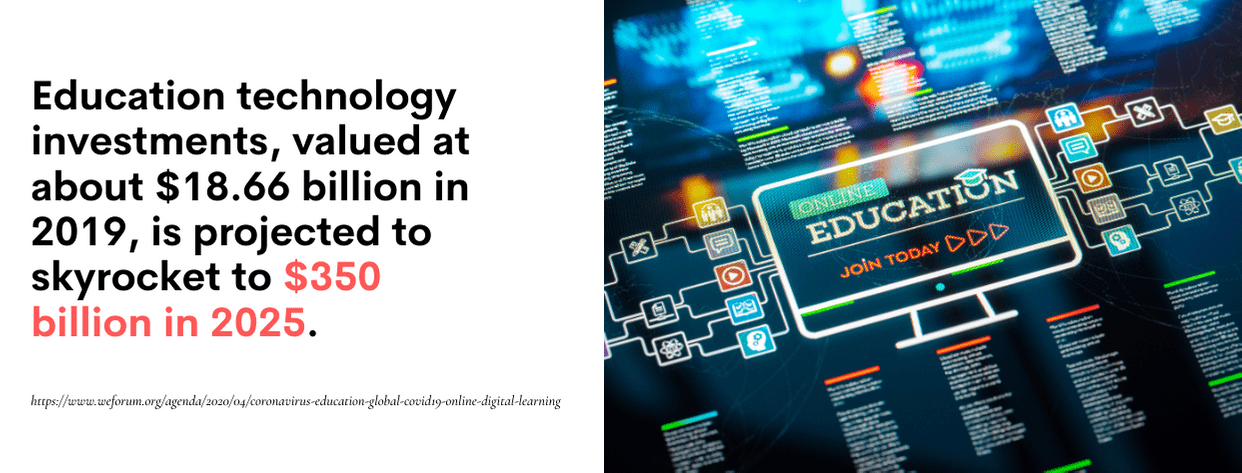
Therefore, it is no longer surprising to witness the rapid rise of online education. If anything, it is becoming more of a norm than just a mere trend in recent years. Debates around the subject and the endless comparison to traditional learning will not be completely avoided, though, with many arguing that one is better than the other. The debates are not new.
They have been around for ages, alongside the inevitable changes in education delivery and technology. To understand the huge role of online learning and its relevant contribution to the uncertain times of a worldwide pandemic, it is insightful and enlightening to look back on its roots. It will help us recognize its immense benefits, understanding its present-day dominance, and anticipate its implications in the next few decades.
- Online Education in the Past
- When It All Started
- Distance Learning in the 20th Century
- The Age of Radio and Television
- The Advent of Information Age
- The Modern Era of Online Education
- Online Education in the Present
- Collaborative Environment
- Eradicating Discriminations
- Resource Accessibility
- Cost Advantages
- Customized Learning
- Technology Still Plays an Important Role
- Online Education in the Future
Online Education in the Past
It seems distance education, the precursor to online education, is a modern-day invention, but this innovative approach to learning can be traced back to the times before the advent of the Internet.
When It All Started
Distance learning’s interesting and complex history began in the 19th century. This learning method was prompted by geographical isolation from schools and was deeply rooted in dispersed religious congregations. Case in point, a program that aimed to train Sunday school teachers and church workers began in 1874 in Western New York. It later expanded to accommodate nondenominational courses of directed home reading and correspondence study.
But distance learning rose to greater heights when mail-order correspondence became a thing. Courses were offered through the mail, serving the needs of business employers who sought to train women for secretarial duties. These correspondence courses emphasize grammar, spelling, the composition of business letters, and bookkeeping, among many others.
Mail-order business correspondence courses were also offered in US companies, one of Strayer’s Business College of Baltimore City – now known as the present-day Strayer University.
In the 1890s, the Pennsylvania Colliery Engineer School of Mines launched a correspondence course tackling mine safety. This course was an effort from a journal publisher to minimize the excessive mining accidents by educating workers in mine safety beyond what they usually learn from their apprenticeships. This, later on, gave birth to the International Correspondence Schools of Scranton, Pennsylvania. The offerings expanded to commercial education, ornamental design, and other engineering trades.
In 1982, Penn State started offering non-credit agricultural courses to farmers through the mail, covering varied topics such as plant life, farm drainage, plant propagation, and horse breeding. Their students came as far as Canada.
The correspondence courses had worked so well, owing mostly to the well-developed mail and parcel post system.
Distance Learning in the 20th Century
The 20th century saw distance learning taking a foothold in the US, making its real and impactful presence in conventional educational institutions. Lectures started incorporating technological aids, allowing for a more visual approach to instruction. It is in contrast to the traditional classroom instructions where recitation practices are still dominant.
Most of the great strides in distance learning, it should be noted, were linked to technological advancements that were integrated into classrooms. We can trace this back to the invention of the phonograph. The first language laboratories were borne out of this invention, allowing language learning through audio and audiovisual devices. Phonograph recordings accompanied print and written communication to make distance learning possible.
The Age of Radio and Television
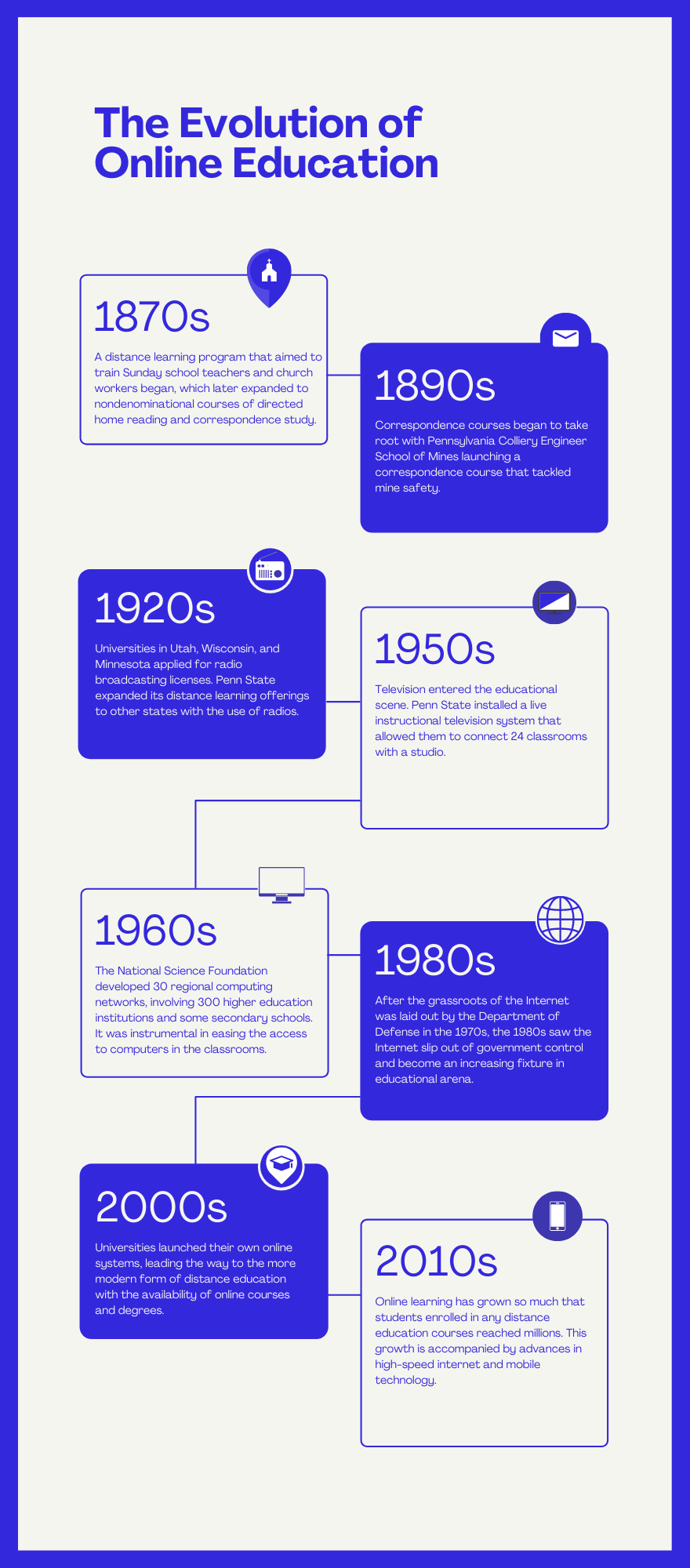
The development then moved on to radios. The first broadcast of recorded educational programs started with radio stations owned by universities. As the first electronic mass medium, radios have started permeating the realm of education. It provided educators the needed reach and immediacy for learning, allowing them to use a powerful medium to complement their existing curricula and written text.
Private broadcasters, radio stations, and educational institutions worked for hand in hand to further education by designing and developing specific k-12 and post-secondary education programs. Both the traditional students and distance education learners could tune in to instructive radio programs that magnify their learning. Radio programs are not only for the benefit of students, however. They were also utilized to assist teachers as they facilitated progressive methods of teaching. Programming such as music, social studies, and other specialized fields aided and accompanied lectures from teachers who often have little to no knowledge in these particular areas.
Universities in Utah, Wisconsin, and Minnesota were granted access to broadcasting licenses in 1921. The number of these licenses ballooned to 171 by 1925.
It was also in the 1920s when Penn State expanded its distance learning offerings to other states using radios. They opened a high-power radio station to provide live courses to students as far away as California.
Broadcasting technology once again evolved! This time, television entered the scene. Iowa State University is recognized as the first educational TV broadcaster in the US. It all began when they applied for a license to the Federal Communication Commission (FCC) in 1945.
Other universities followed suit. Penn State joined this innovative approach to learning in the 1950s. Their first venture was installing a live instructional television system, allowing them to connect 24 classrooms with a studio. This setup enabled a one-way feed and two-way audio transmission of courses on campus. Some of the disciplines that delivered courses this way include accounting and engineering, among many others.
Fast forward to 1962, New York University struck a partnership with WCBS-TV to produce the series called “Sunrise Semester.” This television program aimed to deliver lectures from NYU faculty to the general public.
While it was initially met with incredulity, the program that prompted viewers to wake up at dawn (the time slot was between 6:30 to 7:30 a.m.) and watch lectures defied detractors and steadily grew its audience. In its first week alone, it had drawn around 74,000 viewers and 177 enrollees. Viewers tuned in to the inaugural course on introduction to comparative literature. The classes eventually expanded, ranging from math and astronomy to history and philosophy.
The Advent of Information Age
Computers also evolved. From mainframe computers to microcomputers, these devices have certainly come a long way from the computer that Charles Babbage first invented in 1832. This change contributed to the widespread use of computers in school. The first large-scale project for using computers in education was in 1959 when Donald Bitier started PLATO at the University of Illinois.
From primarily research purposes, the use of computers shifted to an academic one. Through the leadership of John Kemeny and Thomas Kurtz, a new and easy-to-use computer language was developed. Their invention gave way to the rapid spread of creating computer-based instructional materials, spanning various subjects.
The phenomenon gave way to computer-assisted instruction, where lectures are tailored to individuals and made more interactive. It was mainly used for mathematics and reading. In this phase, students were given a choice to step away from group-paced instruction. Instead, they were allowed a more individualized form of learning where they could correct their response through swift feedback. This was instrumental in planting the seeds for self-paced education, a characteristic often associated with online learning. Students were able to master a particular subject through drills and practice. This active role in the learning process trained them to be more independent from the usual classroom instruction where teachers dictate the flow of learning for the whole group.
The National Science Foundation was influential in easing access to computers in the 1960s. They developed 30 regional computing networks, involving 300 higher education institutions and some secondary schools. It grew so rapidly that in 1974, millions of students were using computers in their classes.
Personal computers have become the norm in the 1970s. Schools, laboratories, and libraries made use of these for the advancement of learning. This era saw how personal computers were no longer seen as a luxury. They have become a necessity for many schools and universities.
At the University of Michigan, James Kulik conducted a study that sought to analyze the efficiency of computer-based education. He discovered how this method could positively impact student performance. Computer-based education ups scores from 10 to 20 percentile points.
The 1970s also witnessed another development in technology that truly transformed the landscape of distance learning. It was the birth of the Internet, developed by the Department of Defense. They saw its advantage in being able to operate one computer from another terminal. During its early years, the Internet was utilized by scientists for communicating with one another and by the military for their operations. It was only in the 1980s when it slipped out of government control.
Part of the Internet’s revolution was the development of the world wide web in the 1990s. While it was first created for commercial purposes, colleges and universities leveraged its usefulness by posting research data on the Internet. This allowed students to find valuable information without going to libraries and research centers.
Imagine having every type of information one needs at the tip of their fingers. It was the redefining era of the information age. Soon, electronic mail was introduced, letting one send messages with ease and convenience.
The Internet has conquered the barriers of time and space in the areas of teaching and learning. It was monumental in pushing extension and continuing education programs forward. Education, including higher degrees, was greatly made available and accessible with online delivery.
Universities have started launching their online systems in the late 1990s. This includes Duke University and Cornell University. The latter started with online certificate programs, becoming one of the first higher learning institutions to provide distance learning and online courses.
The Modern Era of Online Education
The turn of the century saw online learning spread far and wide. Despite its advances, there are still many limitations to this education method. Lectures are often transferred through text or poorly scanned documents. Most of the communication flow was one-way, apart from instances where online discussion forums were available.
The Internet was not as powerful then as it is today. Online learning in the mid-2000s was still an emerging industry. It even had its fair share of resistance across academic institutions. Slower platforms and poor browser capabilities were also cited as some of the challenges.
Despite the hindrances, there was a surge in online platforms and educational websites that offered multimedia solutions. The academic world incorporated PDF, audio, and video documents. Language-learning centers also made use of telephone lessons and voice recognition tools.
Web-based learning also made various strides by introducing digital reading materials, podcasts, email, discussion forums, and chat rooms. There was also a growing trend in the form of shared social spaces. This includes blogs, wikis, and collaborative edited documents.
While the early stages mostly rely on computer labs, the next few years witnessed the growth of mobile computers. Laptops became a staple in university students’ life, making it easier for distance learning to be executed.
The emergence of high-speed Internet contributed greatly to both synchronous and asynchronous online learning. Education can truly take place, anytime and anywhere. Self-paced online learning had greatly improved, too. Even better, there was an ease of access to sources of knowledge without the physical limitations. Interactions between the distance-learning student and their instructors have increased, enabling instant feedback and a supportive online learning environment.

Online Education in the Present
Online learning is relevant now more than ever. About 79% of colleges offered distance education courses or entire distance education programs, according to 2018 to 2019 figures. More than 6 million students enrolled in any distance education courses at post-secondary institutions that grant degrees.
This changing lifestyle requires the convenience of distance learning. Busy parents who juggle their family responsibilities and work demands will find online education a viable option should they plan to further their education.
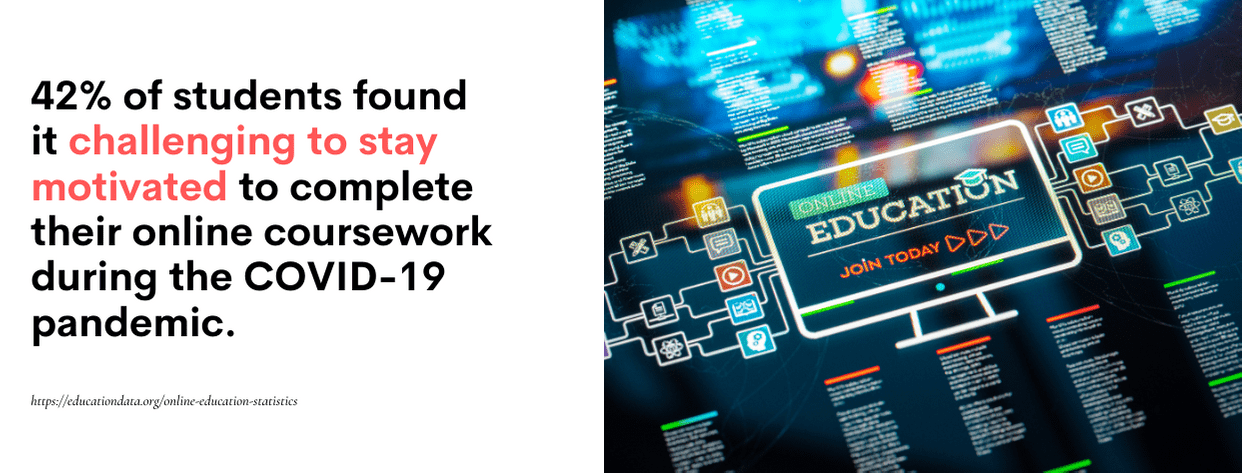
An ever-connected world will also benefit a lot from the accessibility of earning courses and degrees online. It does not matter if one lives next door to a university or thousands of miles away. They will get equal opportunities to learn and gain a foothold in their professional pursuits. Online education poses a convenient way to earn a degree, certificate, or course because it allows them to plan their studies around their hectic schedules.
The current pandemic also proved the usefulness of online education. Students can continue learning from the safety of their homes at a time when lockdowns and community quarantines are so common. Despite the challenges in the rapid shift to online learning, many college students look at online learning in a favorable light. In 2020, a survey from Statista found that 41% of college students consider their college-level online learning experiences better than their college-level classroom experience.
However, it should be emphasized that online learning will always be relevant in COVID-19 and beyond. To understand its growing value, it is important to look at its benefits beyond its accessibility and convenience.
Collaborative Environment
Unlike in the past, distance learning in the present enjoys the synergy that the Internet allows. Dynamic interaction between instructors and students can happen! Earning a degree or completing a course online does not mean isolation from social interactions. Students can share ideas and resources throughout the learning process through video conferencing and online forums. They can contribute to the discussions and provide feedback for each other’s work without physically meeting. Virtual classrooms encourage collaboration and interaction.
Eradicating Discriminations
The online environment offers a certain measure of anonymity. Factors like age, physical appearance, disabilities, race, and gender are largely inconsequential and absent. The attention is instead focused on the content discussion. Responses are not hindered by insecurity and apprehension. The main basis for academic performance is one’s ability to respond and thoughtfully contribute to the material at hand.
Resource Accessibility
In any academic environment, resources are of utmost importance. Today’s students have a range of options when it comes to their resources and materials. They are not hampered by distance and locations. They can do their research right from the comforts of their sofa. Instructors can send a compilation of resources and reading materials online, including links to scholarly articles and other relevant sources. Students also have the freedom to pace their learning and gain knowledge beyond what their virtual classrooms offer.
Cost Advantages
There is cost-effectiveness in online learning. Some online degrees are considerably more affordable than their traditional counterparts, mainly because additional costs for miscellaneous expenses are disregarded, such as textbooks and printed course materials. There is no need to pay for board and lodging near the university, nor is there a real need for transportation fees. Time can also be maximized.
Customized Learning
Flexibility is not only applicable in the part where one can complete the course anytime and anywhere. Learning can also be customized. Study pace can be set by individuals, allowing for optimal learning as one can take on any coursework to the best of their abilities. Since other material formats are integrated into online education, such as forums and discussions, dynamic and more tailor-made learning is also possible.

Technology Still Plays an Important Role
The many evolutions in technology are still at the heart of online education. Here are some of the best-used tools and technology for virtual learning.
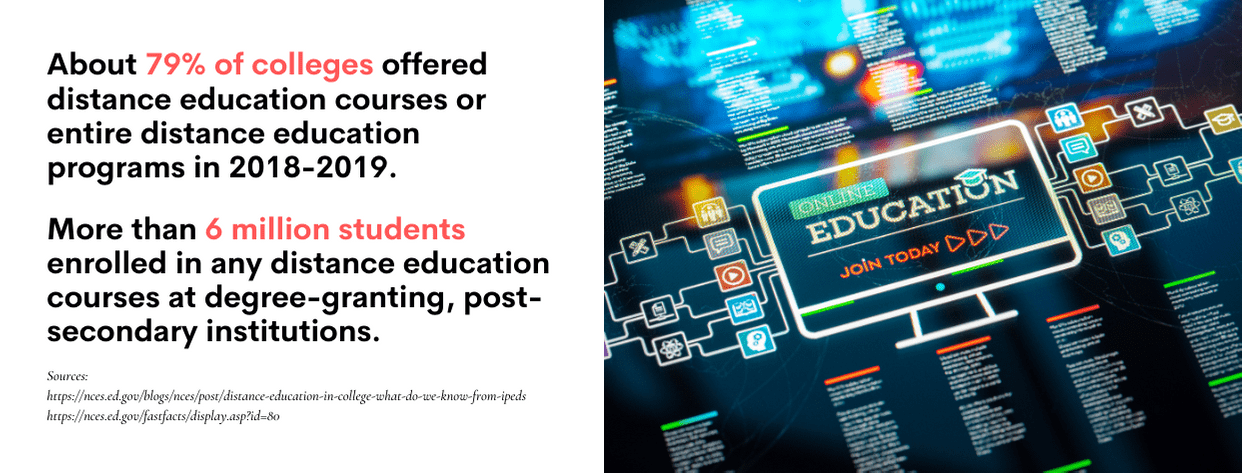
Mobile Technology
The world has gone mobile. Desktop computers and laptops may still be as relevant as ever, but smartphones, tablets, and other mobile devices changed it all! Students can now easily bring their research with them everywhere, without being weighed down by heavy equipment. Mobile phones can be easily linked to the Internet, allowing both teachers and students to track down information and conduct menial tasks like searching for their respective topics.
The integration of social networks in virtual classrooms is greatly helped by mobile technology through portable devices that they can bring everywhere.
Video Conferencing
Since its inception, it has always been present in education, but videos took on a whole new meaning in modern-day online learning. Before, the broadcast of lessons is often one-way. But today, teachers can give immediate feedback to students through live video conferencing. Real-time interactions will be easier with the help of video conferencing platforms like Zoom and Microsoft Teams. Training students with actual demonstration is possible with this technology, too.
Cloud Computing
Everything, it seems, can be saved to the cloud. It makes the storage and retrieval of information all the more convenient and efficient. Students can easily collaborate on their group assignments without ever meeting physically. One of the best examples of this is the use of Microsoft Office or Google tools. Professors can assign topics and assignments through spreadsheets, and students can access and check them from their own devices. Any changes they make can be saved and available to everyone.
Cloud-based software is a game-changer. It truly capitalizes on the convenience and accessibility of the Internet and the world wide web.

Online Education in the Future
It is widely agreed that online education is here to stay. More and more universities embrace online learning, many out of necessity due to the extraordinary times. Others are keeping up with their fellow institutions and meeting the increasing demand for online education.
The shift would not be easy. While the benefits are well accepted, the challenges also pose real questions about the future of online learning. Where is it exactly headed? How will the future direction impact education as we know it today?
The Predicaments and Challenges
Many universities that just dipped their toes into online education find that it is not as easy as it sounds. They make the mistake of applying the same principles they use in traditional classroom instruction to online teaching.
While the curricula and weight of the courses on offer remain the same, there should be some differences made to the way things are done online. For example, standing in front of the camera and broadcasting to the class via zoom is not teaching. Online learning, after all, is more than streaming, recording, and showing their PowerPoint material through the screen.
Moreover, flexibility is at the core of most online learning. Students often have different learning styles, and it is important to accommodate them all in the present setup. Educators should be able to look at four aspects of flexibility in online education. This includes content, delivery, requirements, and time. They should allow students to complete the course at a time and device most convenient to them.
The key to a more worthwhile online learning is also in engaging the students despite the barriers. That is why activity-based learning is prioritized over traditional didactic methods. However, to accomplish this, students must be willing and open to learning newer and better technologies. Educators must also adjust to the changing trends that will enhance the online learning experience.
Fortunately, it is something that many educational institutions are looking into. They have been investing in new educational technologies in recent years and will continue to do so in the future. The global edtech investments have reached $18.66 billion in 2019. This number is expected to rise, and the projected amount is $350 billion by 2025.
Online Education Trends in 2021 and Beyond
Learning institutions should start preparing for the future of online education. After all, there are bound to be changes in technology, tools, and processes involved in digital learning. The sooner educational institutions adapt to these changes, the better for their future.
It will be advantageous to look at the various trends that dominate online education today. Many of these will continue to shape online learning in the years to come.
Shift to Applied Learning
A huge number of employers today value skills more than just mere knowledge. This means they would rather hire someone who knows how to do stuff than those who just know it. They need people who know how to put what they have learned into practice. Many educators should keep in mind to emphasize practical exercises, highlighting the principle of learning by doing. Studying theory should not be the core of the online learning experience.
Emphasis on High-Speed Learning
Time matters to a lot of people. When choosing an online course, many consider the time it takes for them to complete it. Some people want to take short courses in quick succession as opposed to taking just one long course. This means educational institutions should consider shorter modules that students can master much quicker, allowing them to spend less time studying. After all, bite-sized learning warrants less pressure, and it can better suit a modern lifestyle.
Turning to Adaptive Learning
Many online students need to get a more tailored approach to their education. Resources, projects, activities, and assignments should be personalized according to their needs. This approach to learning is implemented not by teachers themselves but by established algorithms and assessments. It is still currently under development, with online platforms trying to integrate adaptive learning services on a small scale.
Integration of Artificial Intelligence
AI is becoming more important to many companies and organizations in the past few years. It is increasingly incorporated into e-learning. Using AI, students are guided through their courses and tailor a more adaptive approach to their learning style. Learning predictions and personalization are quite possible. This helps students get the most of online learning.
Attempt at Gamification
Educators always try to make learning as fun as possible. Learning through games makes lessons more interesting and digestible. Educational materials can be enhanced by providing immediate application. Students will be able to understand the topic at hand through interactive games. Game-based learning solutions help with engagement and retention. It will make the impersonal nature of eLearning more intimate.
Integrating Social Learning
When information is easily accessible and consumed, it is worth looking into social learning when it comes to online education. Many students learn through engaging in the digital world through various social media platforms, and in the process, exchange ideas and share their views. As a result, they become more aware of the world around them. This ushers in a rich diversity of ideas and knowledge at their disposal. Educators must learn how to incorporate this aspect into online learning to maximize its potential.
Adapting Immersive Technology
Some of the most advanced technologies today have to do with immersive tools that can alter reality and space in which students can interact. These often take the form of virtual reality and augmented reality. They are being used to enhance the learning process.
Creating a computer-generated artificial environment through virtual reality can be a great way to teach students hands-on experiences that would be hard in real life. On the other hand, augmented reality can let students see the physical world in novel ways. For example, a student can view digital images and see them come to life through their smartphones. It can help create memorable lessons.
